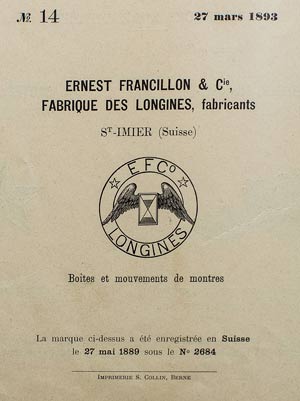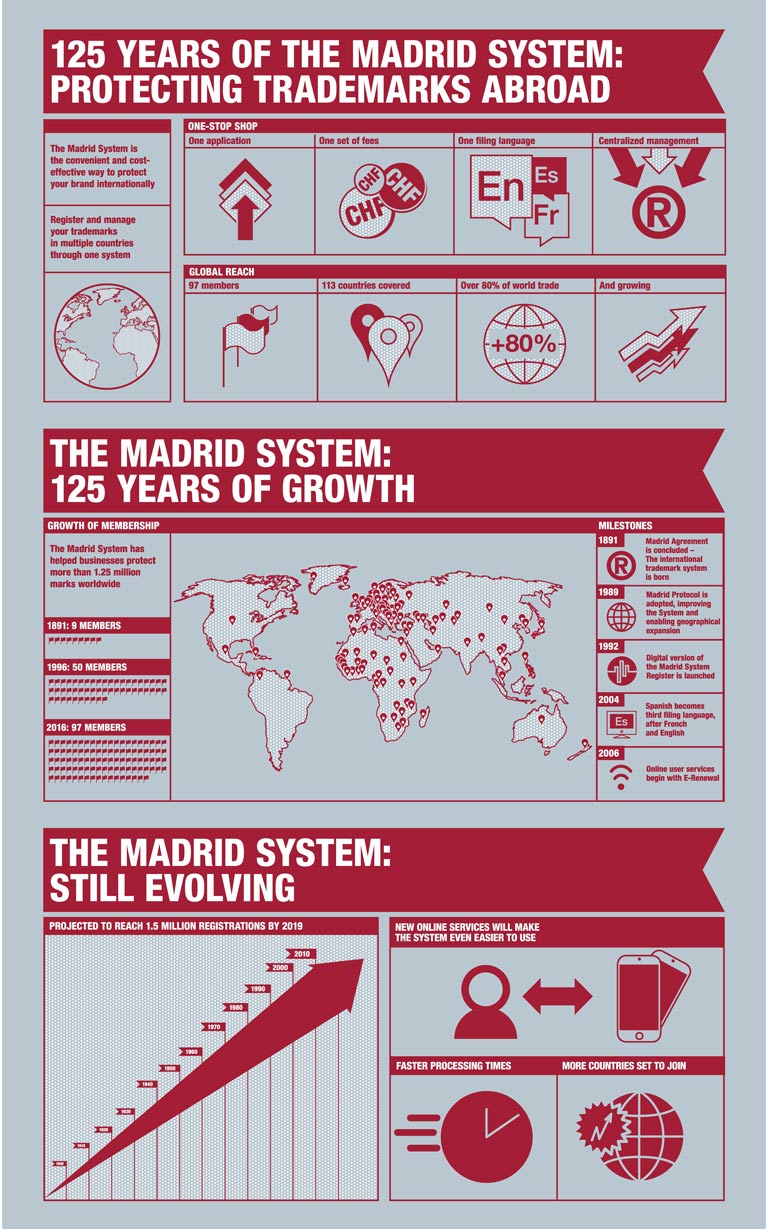
The Madrid System Turns 125
By Sara Amini, Madrid Registry, WIPO
In April 2016, WIPO’s Madrid System for the International Registration of Marks turned 125. Thanks to the vision of policymakers in the late 19th century, today it is relatively straightforward and cost-effective to register and protect trademarks in key markets around the world.

the Madrid System. Some 630,000 of these – many of
them household names – are still active. The oldest
internationally registered mark (above) that is still active
is held by Swiss watchmaker Longines. It was first
registered in 1893 (Photo: WIPO/Berrod)
The growth of the Madrid System is a story of international cooperation and aspirations for cross-border trade expansion. As such, it is very much a story of our time. Companies 125 years ago sought to trade with their foreign partners, and the fortunes of businesses today largely hinge on their ability to tap new markets, and stand out against their competitors confident that their trademarks can be protected.
The Madrid System is built around two treaties: the Madrid Agreement Concerning the International Registration of Marks of 1891 and the Protocol to that Agreement of 1989, which introduced new features and flexibilities that have enabled the System’s global expansion.
The Madrid System makes trademark portfolio management simple. By filing one international application through their national trademark office in one language, and paying fees in one currency, applicants can obtain protection in multiple export markets. Subsequent management of trademark rights is also centralized and easy.
In response to growing demand for trademark rights – they are an indispensable business tool, inspiring customer loyalty and driving business value – the Madrid System has become a central pillar of the international trademark regime. Thousands of businesses large and small from across the commercial spectrum have used and continue to use the Madrid System to protect their marks in global markets. Well over a million marks have been registered under the System. Some 630,000 of these – many of them household names – are still active. In 2015, a record 49,273 new international trademark applications were filed under the System.
The oldest internationally registered mark that is still active is held by Swiss watchmaker Longines. It was first registered in 1893. Just last year, the 1.25 millionth international trademark registration, for Micromax, was filed by the Indian cell phone maker of the same name, highlighting the expanding global interest in international trademark protection.
By the end of July 2016, the System counted 97 members covering 113 territories. And with other countries set to take advantage of the System’s streamlined, user-friendly and cost-effective procedures, it is on track to become truly global.

Constant evolution
Throughout its 125-year existence, the Madrid System has evolved. With each new development, the aim has been to adapt to the changing needs of an ever more connected global marketplace.
Beyond the adoption of the Madrid Protocol in 1989, noteworthy developments include the addition of English (1996) and Spanish (2004) as new working languages alongside French, its original working language since 1891.
The technology underpinning the System is under continuous development to support users throughout the lifecycle of their mark. Over the past decade various E-Services have been launched to enhance the System. These include E-Renewal (from 2006), Madrid Real-Time Status (from 2010), Madrid Portfolio Manager (from 2012), E-Subsequent Designation (from 2014) and the most recent addition, Madrid Monitor, which allows users to keep track of all activities and developments relating to the status of marks registered under the System.
The growth of the Madrid System is testament to the vision of its founding members who recognized the central importance of marks to global trade. Its success is also down to the thousands of companies around the world who come up with new brands of products day after day. And last but not least, it is also thanks to the hundreds of trademark examiners and policymakers worldwide who work to ensure the System’s integrity and continued evolution. Here’s to the next 125 years!

The WIPO Magazine is intended to help broaden public understanding of intellectual property and of WIPO’s work, and is not an official document of WIPO. The designations employed and the presentation of material throughout this publication do not imply the expression of any opinion whatsoever on the part of WIPO concerning the legal status of any country, territory or area or of its authorities, or concerning the delimitation of its frontiers or boundaries. This publication is not intended to reflect the views of the Member States or the WIPO Secretariat. The mention of specific companies or products of manufacturers does not imply that they are endorsed or recommended by WIPO in preference to others of a similar nature that are not mentioned.